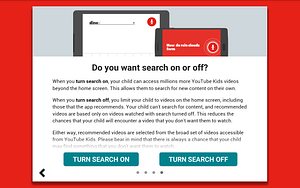
- #TUTORIAL FOR PAGES 09 HOW TO#
- #TUTORIAL FOR PAGES 09 INSTALL#
- #TUTORIAL FOR PAGES 09 FULL#
- #TUTORIAL FOR PAGES 09 CODE#
Back in the Blazor WebAssembly app, change the "fakeBackend" setting to "false" in the app settings file ( /Blazor WebAssembly Project Structure. #TUTORIAL FOR PAGES 09 INSTALL#
Run MongoDB, instructions are available on the install page for each OS at. Install MongoDB Community Server from. But to get up and running quickly just follow the below steps. #TUTORIAL FOR PAGES 09 FULL#
Back in the Blazor WebAssembly app, change the "fakeBackend" setting to "false" in the app settings file ( /Running the Blazor App with a Node.js + MongoDB APIįor full details about the example Node.js + MongoDB API see the post NodeJS + MongoDB - Simple API for Authentication, Registration and User Management. Start the api by running npm start from the command line in the project root folder, you should see the message Server listening on port 4000. Install all required npm packages by running npm install or npm i from the command line in the project root folder (where the package.json is located). Installation instructions are available at. 
Install MySQL Community Server from and ensure it is started.Running the Blazor App with a Node.js + MySQL APIįor full details about the example Node.js + MySQL API see the post NodeJS + MySQL - Simple API for Authentication, Registration and User Management. Back in the Blazor WebAssembly app, change the "fakeBackend" setting to "false" in the app settings file ( /Core API.Start the api by running dotnet run from the command line in the project root folder (where the WebApi.csproj file is located), you should see the message Now listening on:.
#TUTORIAL FOR PAGES 09 CODE#
Download or clone the project source code from.

Running the Blazor WebAssembly App with an ASP.NET Core 3.1 APIįor full details about the example ASP.NET Core API see the post ASP.NET Core 3.1 - Simple API for Authentication, Registration and User Management.
Open a new browser tab and navigate to the URL NOTE: To enable hot reloading during development so the app automatically restarts when a file is changed, start the app with the command dotnet watch run. Start the app by running dotnet run from the command line in the project root folder (where the BlazorApp.csproj file is located). Download or clone the tutorial project code from. Running the Blazor Login Tutorial Example Locally NET Core applicationsįor more detailed instructions on setting up your local dev environment see ASP.NET Core - Setup Development Environment. C# extension for Visual Studio Code - adds support to VS Code for developing. Visual Studio Code - code editor that runs on Windows, Mac and Linux. To develop and run ASP.NET Core Blazor applications locally, download and install the following: 
Tools required to run the Blazor Login Example Locally Here it is in action: (Hosted on GitHub Pages at ) Styling of the example app is all done with Bootstrap 4.5 CSS, for more info about Bootstrap see. The blazor app runs with a fake backend by default to enable it to run completely in the browser without a real backend api (backend-less), to switch to a real api you just have to change the "fakeBackend" setting to "false" in the app settings file ( /You can build your own api or hook it up with the ASP.NET Core api or Node.js api available (instructions below).

#TUTORIAL FOR PAGES 09 HOW TO#
In this tutorial we'll go through an example of how to build a simple user registration, login and user management (CRUD) application with Blazor WebAssembly.
React: React + Recoil, React Hooks + Redux, React + Redux. Tutorial built with ASP.NET Core Blazor WebAssembly 3.2.1








 0 kommentar(er)
0 kommentar(er)
